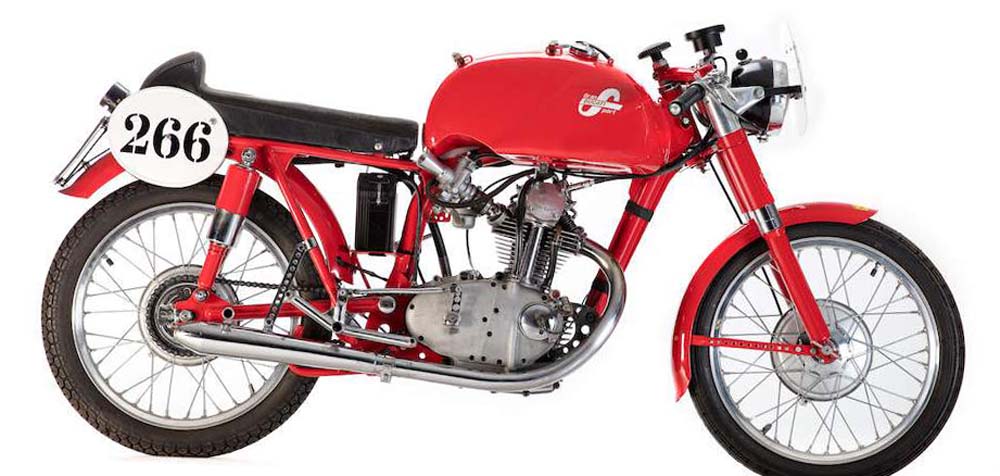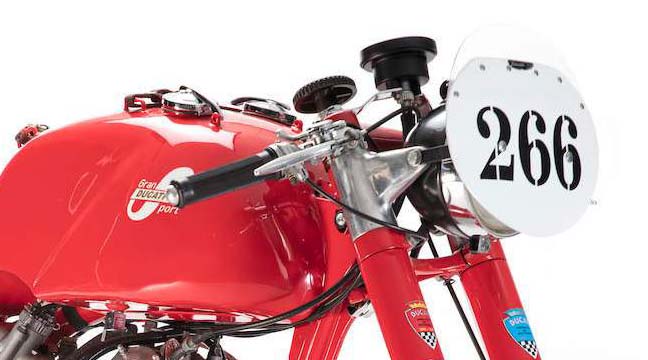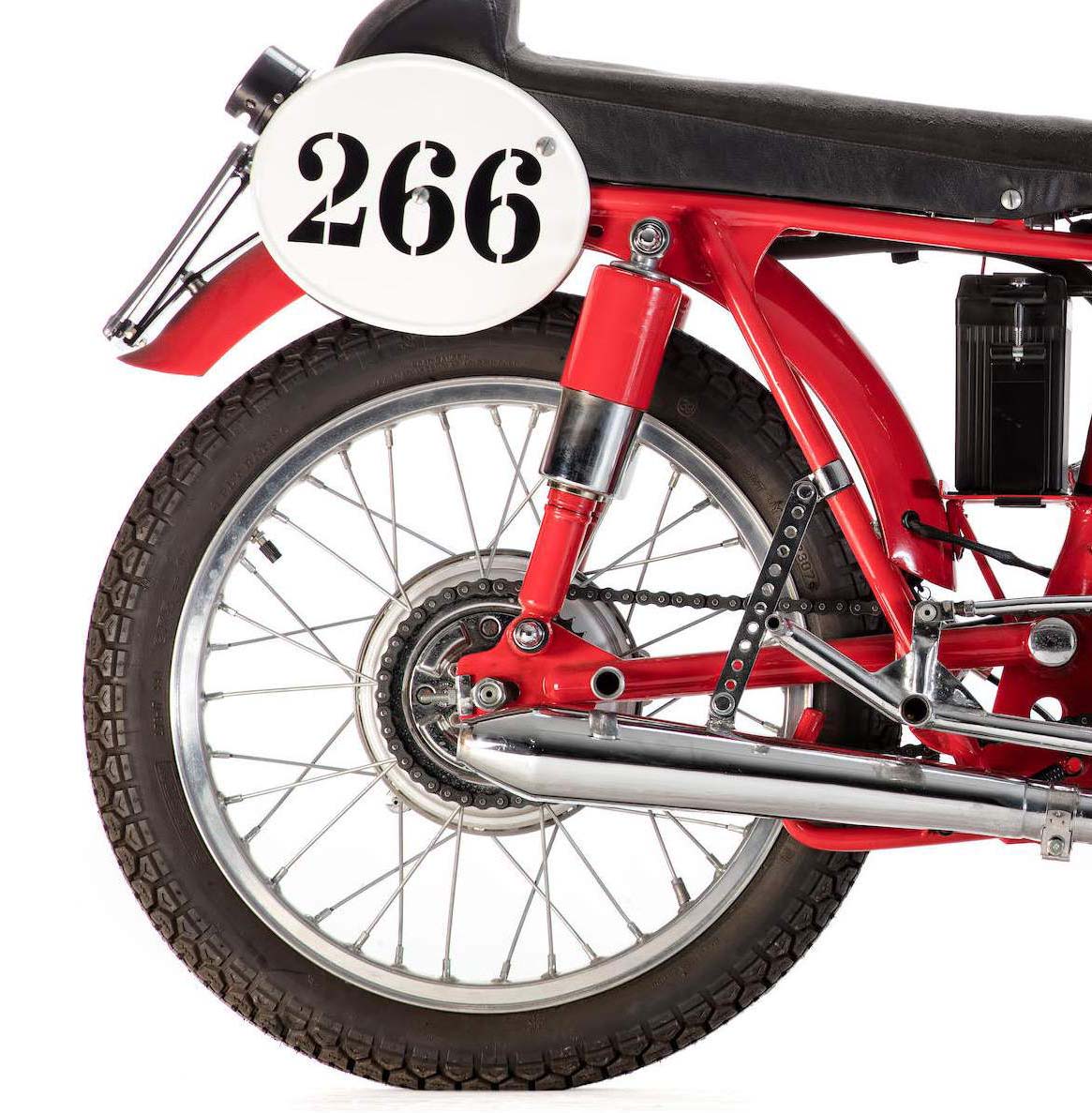
|
|
|
|
|
|
Classic Bikes
Custom Bikes
Individual
Racing Bikes AJP
AJS
Aprilia
Ariel
Avinton / Wakan
Bajaj
Benelli
Beta
Bimota
BMW
Brough Superior
BRP Cam-Am
BSA
Buell / EBR
Bultaco
Cagiva
Campagna
CCM
CF Moto
Combat Motors
Derbi
Deus
Ducati
Excelsior
GASGAS
Ghezzi Brian
Gilera
GIMA
Harley Davidson
Hero
Highland
Honda
Horex
Husaberg
Husqvarna
Hyosung
Indian
Jawa
Kawasaki
KTM
KYMCO
Laverda
Lazareth
Magni
Maico
Mash
Matchless
Mondial
Moto Guzzi
Moto Morini
MV Agusta
MZ / MuZ
NCR
Norton
NSU
Paton
Peugeot
Piaggio
Revival Cycles
Roland Sands
Royal Enfield
Sachs
Sherco
Sunbeam
Suzuki
SWM
SYM
Triumph
TVS
Ural
Velocette
Vespa
Victory
Vincent
VOR
Voxan
Vyrus
Walt Siegl
Walz
Wrenchmonkees
Wunderlich
XTR / Radical
Yamaha
Zero
Video
Technical
Complete Manufacturer List
|
Ducati 125Gran Sport Marianna Sport 1956
|
| . |
'The Gran Sport, particularly in 100 and 125cc versions, was
incredibly successful between 1955 and 1958, and even after it was replaced by
the F3 many riders in Italy continued to campaign the Gran Sport. As it was
hand-built and produced in very small numbers for Italian racing, the Gran Sport
is rarely seen today outside Italy.' – Ian Falloon, 'Standard Catalog of Ducati
Motorcycles'.
Designed by newly arrived engineer, Fabio Taglioni, formerly with Mondial,
Ducati's first overhead-camshaft single - the 100 Gran Sport, nicknamed
'Marianna' - appeared on the racetrack in 1955. The existing 98cc overhead-valve
engine had reached the limit of its development, at least as far as racing was
concerned, hence the need for a design with greater potential. The Gran Sport's
overhead cam was driven by a vertical shaft and bevel gears, and this method was
carried over to Ducati's twin-cam (bialbero) and triple-cam (trialbero) racers,
the latter featuring Taglioni's famous 'desmodromic' method of valve actuation
that dispensed with springs. Incorporating a four-speed gearbox, the Gran Sport
engine was carried in a simple single-downtube frame and acted as a stressed
member.
Apart from the Italian Grand Prix, the most important motorcycle races in Italy
at this time were the long-distance events, held on public roads, such at the
Moto Giro d'Italia and Milan-Taranto. Hence even competition-orientated models
like the Marianna had to have lights and a horn, as required by the FMI (Italian
Motorcycle federation) regulations. Almost all the Italian manufacturers
contested these events, victory bringing with it much valuable publicity.
Ducati's overhead-valve racers had been outclassed by the Laverdas in 1954, but
from the time of its arrival the Marianna proved unbeatable in its class.
Source bonhams.com




|
Any corrections or more information on these motorcycles will be kindly appreciated. |